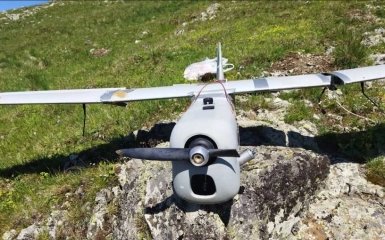According to the experts of the analytical portal Defense Express, it is not enough to shoot down the Orlan reconnaissance drones of the occupation army of the Russian Federation. It is necessary to oppose the entire intelligence complex of the Russian invaders.
Points of attention
- Shooting down Russian army reconnaissance drones alone is not sufficient to prevent potential missile strikes, as they are part of a larger reconnaissance-strike circuit.
- Effective countermeasures should target all components of the enemy's reconnaissance-strike circuits to hinder their ability to strike Ukrainian territory.
- Utilizing American anti-aircraft systems like SM-6 is recommended to counter Iskander missile systems effectively, potentially preventing ballistic missile strikes at long distances.
- Seeking support from the US for advanced countermeasures against Russian intelligence-strike circuits can prove beneficial in enhancing Ukraine's defense capabilities.
- Fully disrupting enemy reconnaissance-strike circuits involves countering not only reconnaissance drones but also intelligence apparatus and space reconnaissance means, to prevent future missile strikes.
Why is it not enough to destroy the Orlan reconnaissance drones of the Russian army
Analysts explain that enemy reconnaissance UAVs "Orlan" act as a component of the reconnaissance-strike circuits of the occupying army of the Russian Federation, connected to the "Iskander" OTRK.
Therefore, it is more optimal to formulate a solution to counteract all components of the enemy's reconnaissance and strike circuits, so that it becomes more difficult for him to hit our territory with missiles, experts emphasize.
Analysts emphasize that even if an ideal result is achieved and 100% countermeasures against the flights of enemy "Orlans" over the territory of Ukraine, the Russian occupiers will still have opportunities to conduct reconnaissance, accumulate a "bank of targets" and carry out missile strikes.
A simplified scheme of the enemy's reconnaissance-strike circuits can be described as follows - "data collection and transmission to control bodies - making a decision to strike - launching a missile." In the part about data collection and transmission to management bodies, not only reconnaissance UAVs can be involved, but also the enemy's intelligence apparatus and means of space reconnaissance in general, - the publication notes.
How Ukraine will be able to counter Iskander missile systems
At the same time, analysts emphasize that the key attention should be focused on countering the Iskander missile systems directly, as a key component of the reconnaissance and strike circuits of the Russian army.
In particular, as one of the most likely options, experts suggest the use of American anti-aircraft systems SM-6 for launching from ground installations, which can hit air targets at a range of up to 370 kilometers, including ballistic ones.
Publicly asking the US for SM-6 to counter Russian reconnaissance and strike circuits with "Iskanders" is worth at least according to the logic of "ask for the impossible, and you will get what you really need," analysts are convinced.




